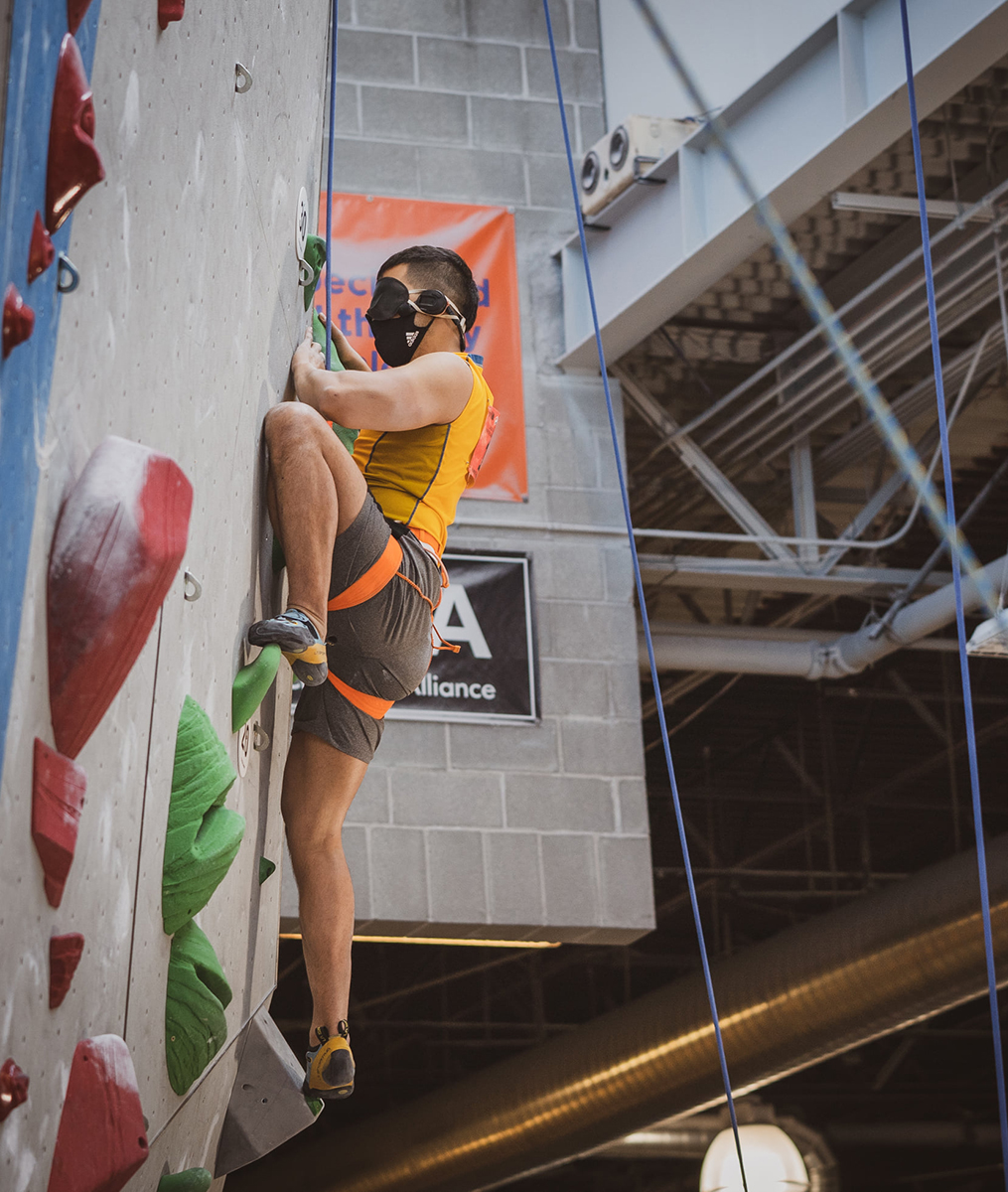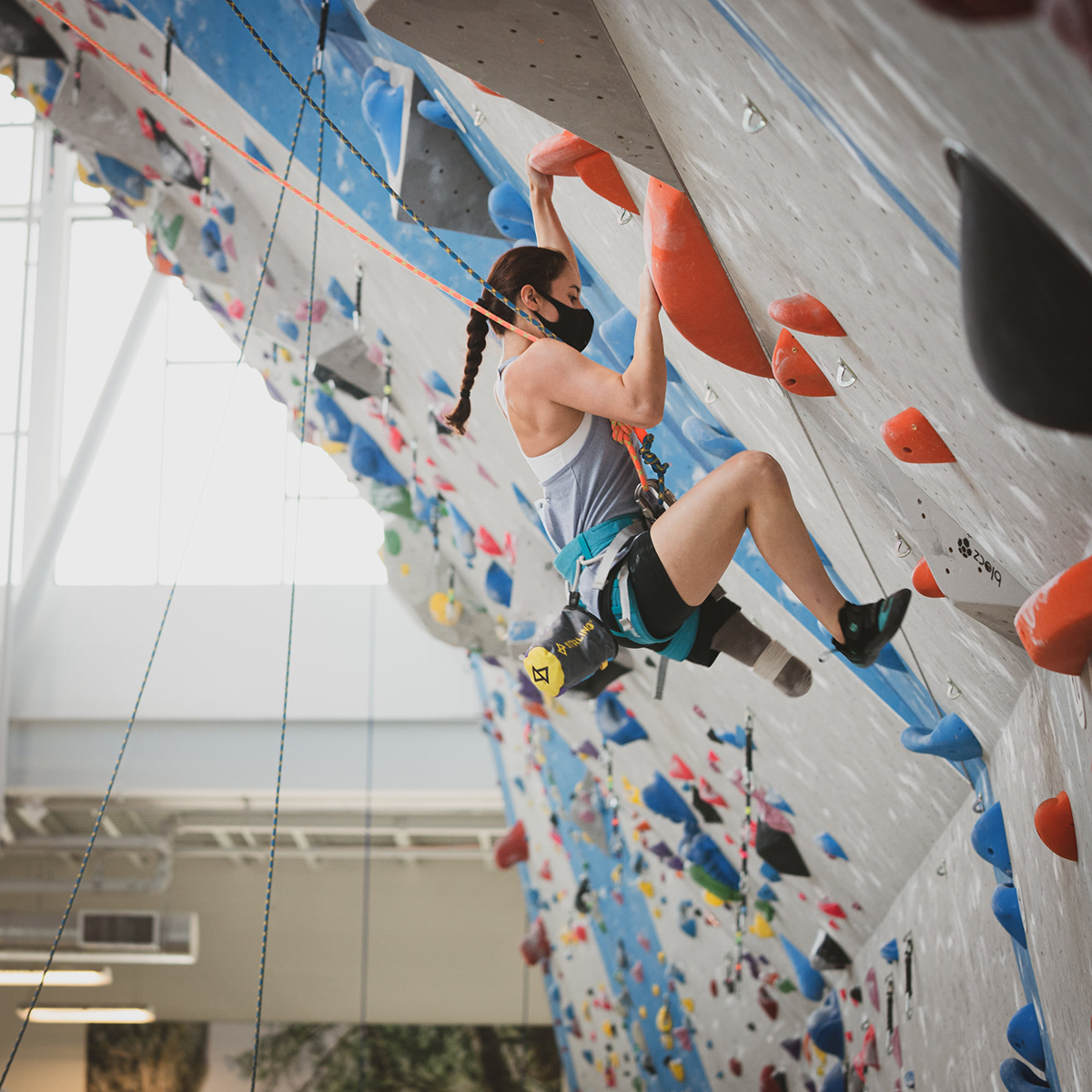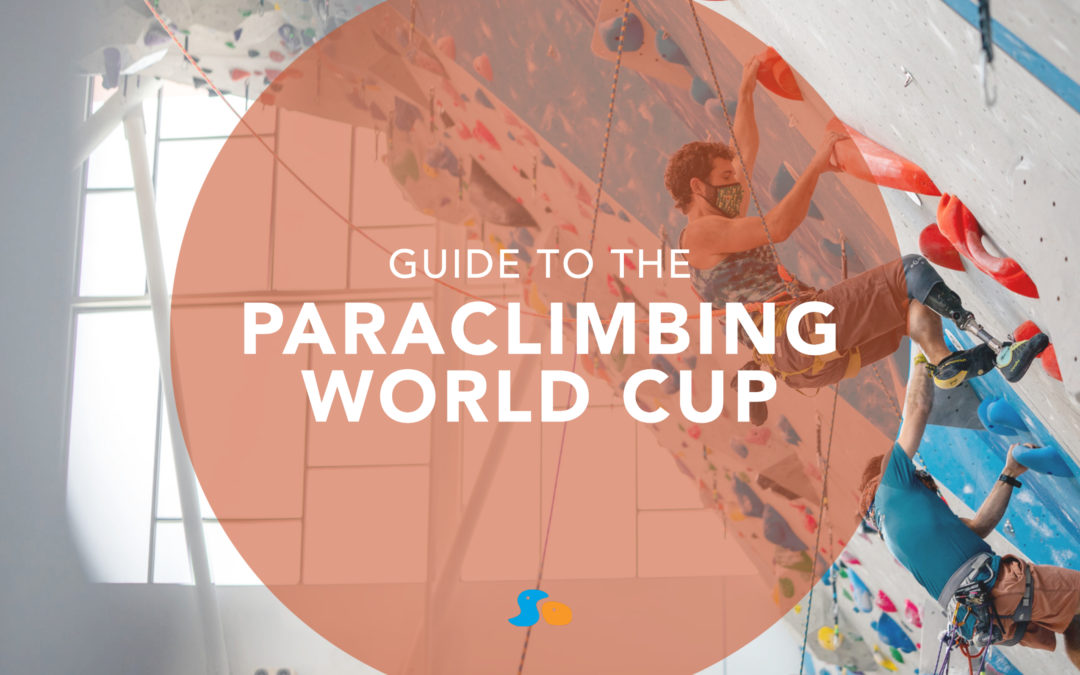On October 9th and 10th, adaptive climbers from across the world will make their way to Sender One Climbing (LAX) in Los Angeles to compete in the IFSC Paraclimbing World Cup. This event will be the third of its series and the first on U.S. soil. We can't wait to share this experience with the community and some of the most inspiring climbers. In preparation for those planning on attending the event, or following along via Livestream, we've put together insightful information about Paraclimbing.
We hope you will join us for another historic event in climbing!
A Brief History
Adaptive climbing is a relatively new sport gaining notoriety in the 1980s primarily due to Hugh Herr and Mark Wellman. Herr was 17 when he was tragically caught in a blizzard. The frostbite he endured caused him to lose both legs. Herr configured special prosthetics for free climbing and went on to get the FA on Vandals a 5.13 in the Gunks. Wellman survived a 100-foot fall that broke his back and allowed for little use of his leg, despite his injury he committed to being the first adaptive climber to climb El Cap.
It wasn’t until the late 2000s that Paraclimbing broke into the competition scene, starting with the Extremity Games. Soon after, USA Climbing got onboard to include adaptive climbing in the framework of ongoing competitions. The momentum continued with the 2012 World Championships for Climbing, which held an adaptive category for the first time ever.
The last 20 years have seen much growth for Paraclimbing in the competition scene and we look to help foster the continuation of that growth, optimistically with the inclusion of Paraclimbing in the 2028 Paralympics.

Paraclimbing Categories
Paraclimbing athletes have faced challenges and overcome obstacles that their able-bodied counterparts likely could not imagine. The drive to perform and succeed is truly inspirational and a joy to watch.
Paraclimbing is broken down into 20 different categories based on the climber’s type and level of impairment and gender. Each category has unique qualifications, rules, and ways that the climber will make their way up the wall.
B: Visually Impaired/Blind
- Subcategories: The B category is separated into three subcategories. Climbers will range in sight ability from impaired central or peripheral vision to fully blind.
- Climbing: The vast majority of B climbers will use a ‘sight guide,’ a partner on the ground who aids the climber’s beta and route via a headset. Prior to competing B athletes along with their sight guides are able to preview walls to visualize and memorize the routes.
- Routes: B1 routes are typically around 5.10a to 5.11d. Athletes are fully blind and move slowly and methodically up the routes.
B2 and B3 climbers have some ability to see so high contrast between holds and the wall is necessary. These routes typically range from 5.10c to 5.12b.
AU: Arm/Forearm Amputee
- Subcategories: The AU category is separated into two subcategories. Climbers here will have an amputation at the shoulder or forearm or a limb deficiency so that the athlete has one arm and one stump for use in climbing.
- Climbing: Precise footwork is paramount for climbers in the AU category who may also need to rely on one arm dynamic movement.
- Routes: AU1 routes are typically around 5.10a to 5.10c. Athletes use only one arm to climb so plentiful footholds and good footwork are key. Low angled walls and shorter moves are desirable for this category.
AU2 climbers use one full arm and one stump to climb. Depending on the nature of the stump it may be used to hook holds, but pinches and pockets are less useful. Routes are usually between 5.10c to 5.12b.
AL: Leg Amputee & Paraplegic
- Subcategories: The AL category is separated into two subcategories. Climbers here will either have no usable muscle function below the waist or have a lower limb amputation.
- Climbing: Paraplegic competitors will campus their way up an overhung route. Athletes with a lower limb amputation may choose to climb with a prosthesis or not.
- Routes: AL1 routes are set on highly overhanging walls using large holds.
AL2 routes must be set to accommodate climbers with or without a prosthesis and those with either a left or right amputation. Difficulties usually range from 5.11d to 5.13d.

RP: Limited Range, Power, and Stability
- Subcategories: The RP category is separated into three subcategories. It is the most complex of the categories with athlete conditions varying more than any other. Athletes here have conditions that result in a limited range, power, and stability. They may be the result of neurological disabilities, Hypertonia, Ataxia, Athetosis, Impaired passive range of motion, Impaired muscle power, Short Stature, or others.
- Climbing: With the range in complexity of athletes in this category the type of climbing and movement strategies will also widely vary.
- Routes: RP1 climbers have either neurological or physiological impairments that affect all body parts severely. Because the limitations vary widely, the routesetters need to offer climbs with many options. Climbs generally range from 5.10a to 5.11a.
RP2 climbers have impairments with a moderate impact compared to RP1. RP2 routes typically range from 5.10c to 5.12b
RP3 climbers have a noticeable neurological or physiological impairment but it does not limit their ability to climb normal routes. Grades in this category range from 5.11d to 5.13d.
We hope our Guide to the Paraclimbing World Cup has been helpful! We look forward to hosting the 2021 IFSC Paraclimbing World Cup. For more event details and information about spectator tickets, visit our event page.
Images provided by USA Climbing.
Information gathered for this article was sourced from the following resources:
2016-2021 COMMON CLIMBER
2021 Paraclimbing News
2021 MOJA GEAR
2021 Outside Interactive, Inc
2019 ifsc-climbing.org

